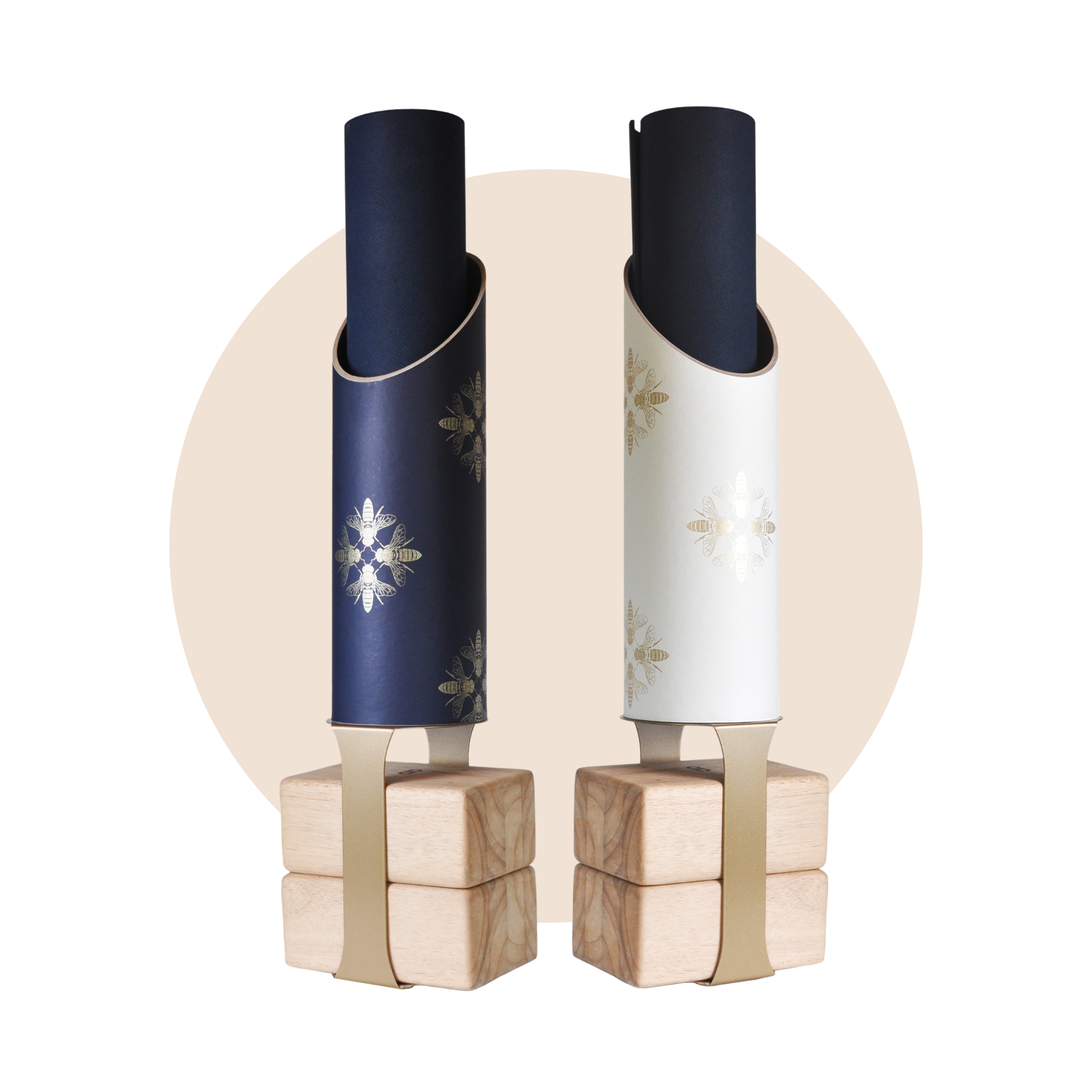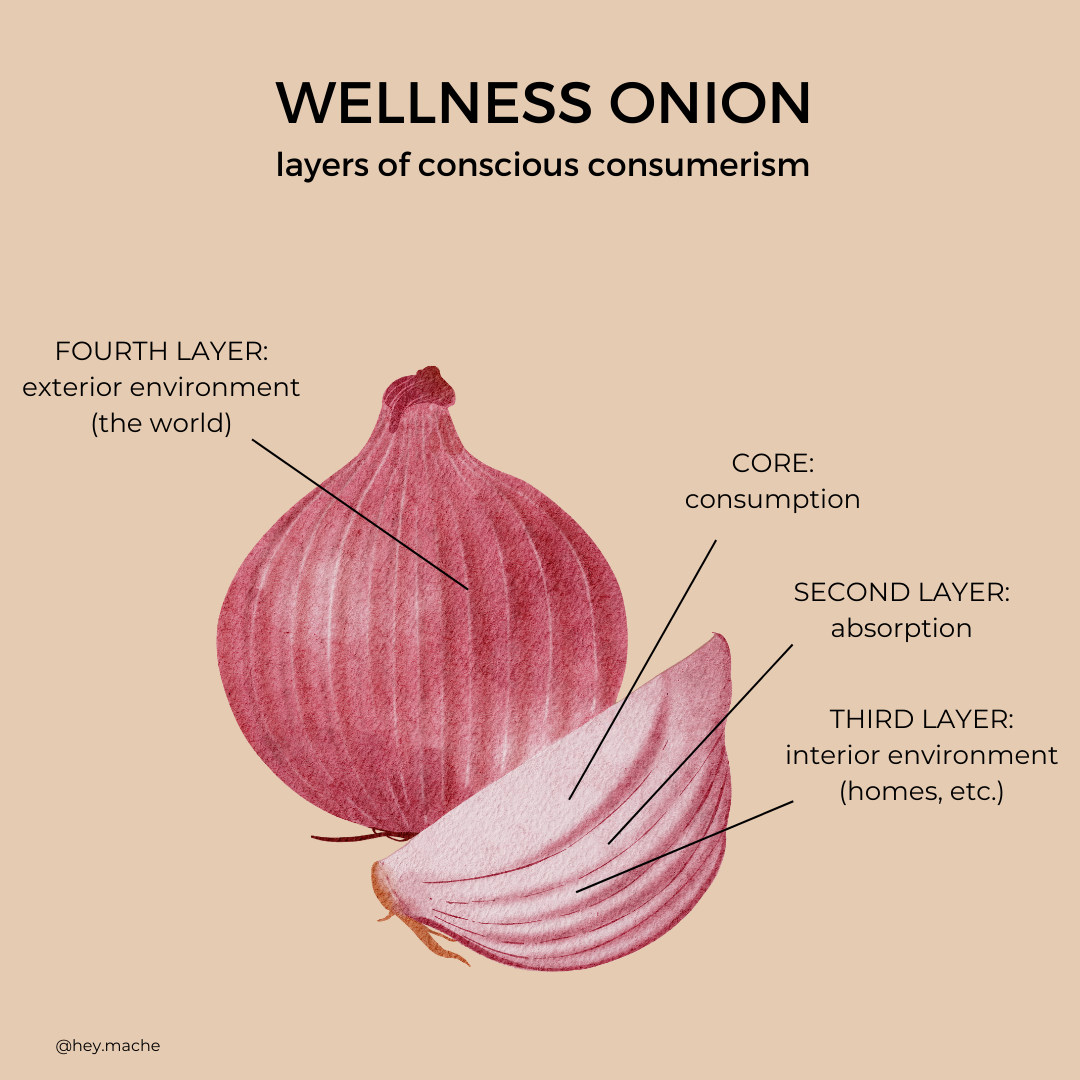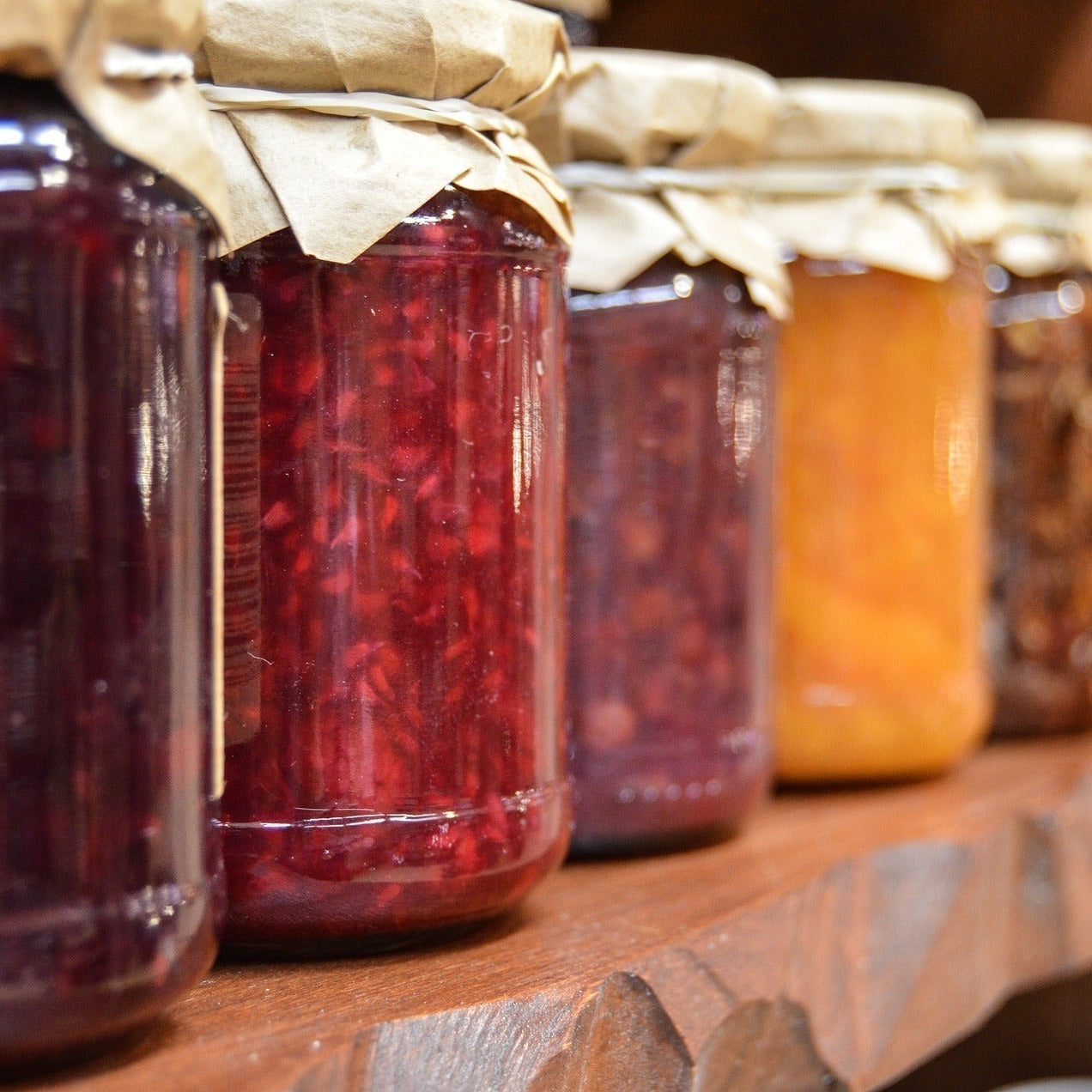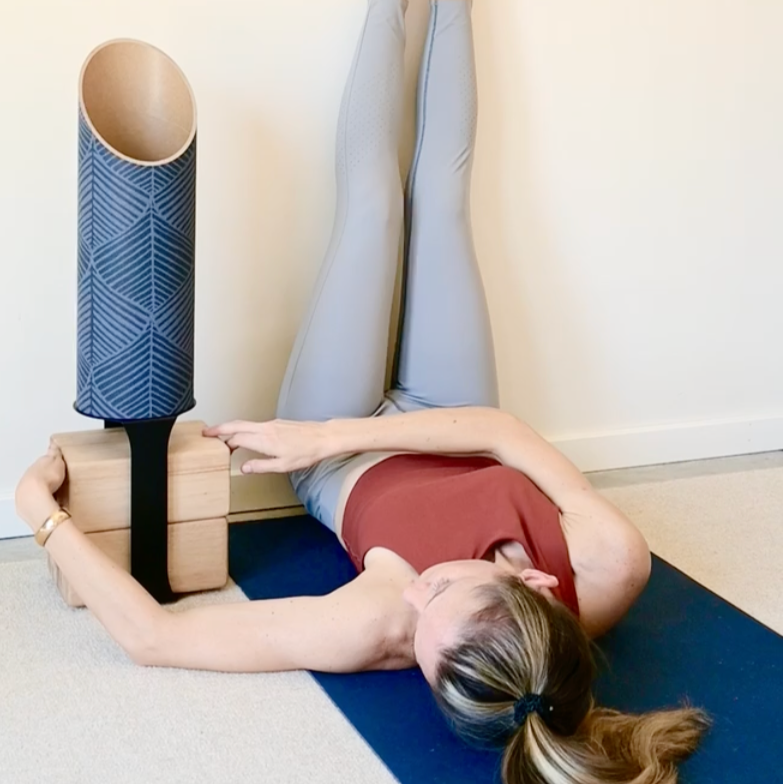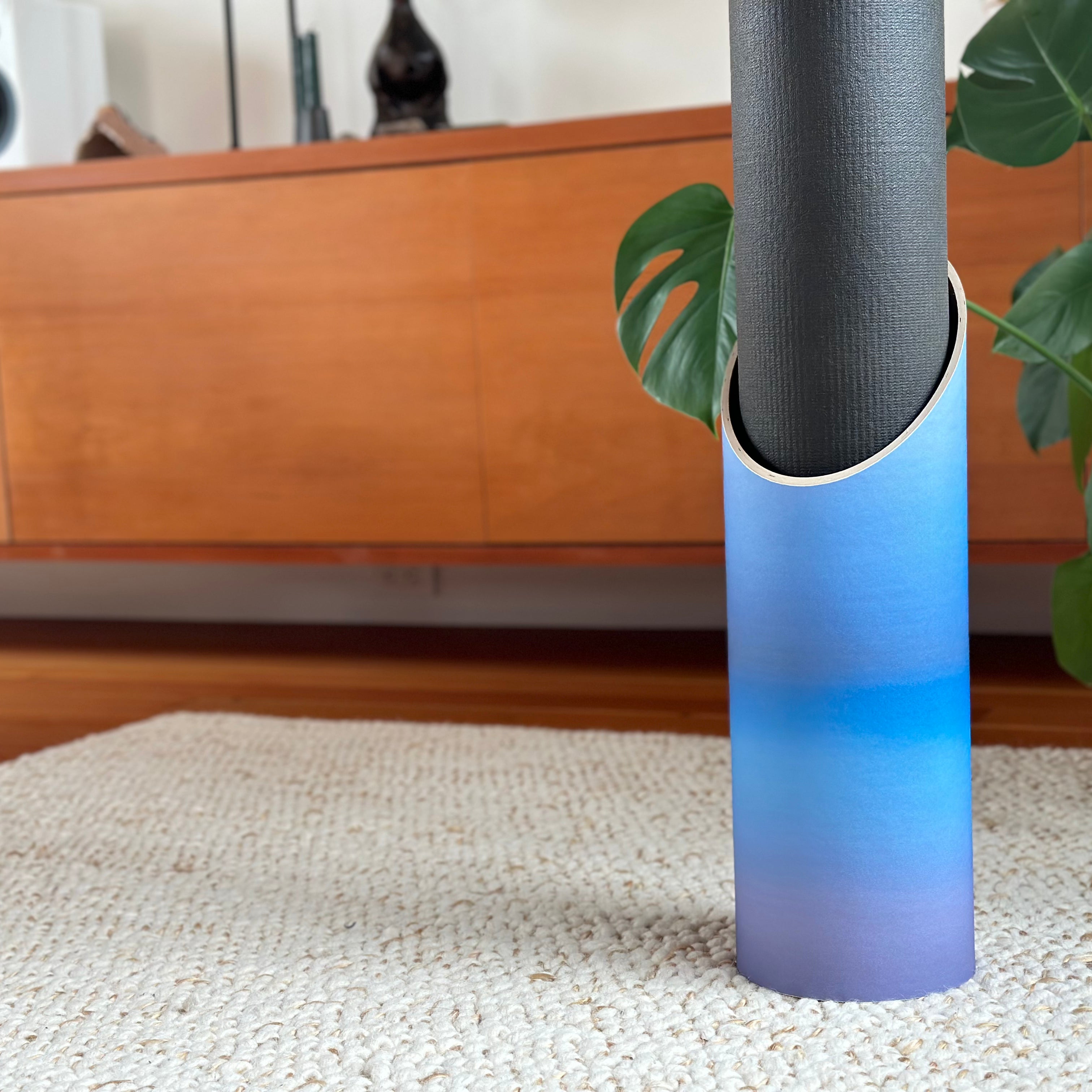Welcome to the tranquil start of winter – a season that, in the wisdom of Traditional Chinese Medicine (TCM), is deeply intertwined with the water element. At Mache, we believe in harmonizing our lives with the natural rhythms of our environment. This article delves into how the principles of winter and the water element can inspire sustainable living, wellness, and mindful design choices in your home.
Understanding Winter + the Water Element
Winter, in its serene stillness and frosty demeanor, carries with it more than just a drop in temperature; it brings a profound shift in the energetic landscape as per the principles of Traditional Chinese Medicine (TCM). This season is intimately connected with the water element, considered the most nourishing and essential substance for sustaining life. In TCM, the water element is not just a physical entity but a symbol of deeper energies within us.
The water element is akin to a reservoir of our life's energies, storing a significant amount of our reserves. This aspect underscores the importance of rest during the winter months. Just as the earth is covered in a blanket of snow, gathering strength for the burst of life in spring, our bodies too need this period of rest and rejuvenation. The continuous cycle of overworking and depriving ourselves of adequate sleep can severely deplete the water element, especially impacting the kidneys, which in TCM are believed to be the seat of our vital energy or "Qi."
Beyond its role in physical sustenance, the water element in TCM is also a metaphor for flow, adaptability, and resilience. When in balance, it fosters attributes such as strength, courage, and willpower, allowing us to navigate life's challenges with grace and fortitude. The smooth, effortless flow of a balanced water element is akin to the ideal state of being where we move through life's cycles with ease and alignment with our purpose.
However, an imbalance in the water element can manifest in less desirable ways. It may lead to heightened states of fear and anxiety, leading to phobias and a general lack of courage. In TCM, each element is associated with specific emotions, and fear is the emotion linked to the water element. This connection points to the delicate balance required to maintain our emotional and physical well-being. The manifestation of fear, in this context, is not just a psychological phenomenon but an indication of deeper imbalances within the body's energy system.
Because of this connection, understanding and embracing the nuances of the water element in winter is crucial for maintaining our health and well-being. It involves aligning ourselves with the season's rhythm - slowing down, conserving energy, and nurturing our inner reserves. This alignment is not just about physical health; it's a holistic approach that encompasses mental, emotional, and spiritual well-being, reflecting the interconnected nature of our existence through TCM.

The Kidneys + Urinary Bladder in Winter
In the cold embrace of winter, the focus in TCM shifts significantly towards nurturing and protecting the kidneys and urinary bladder. The kidneys, regarded as the storehouse of the vital essence or "Jing," are essential for our growth, reproduction, and overall health. This season demands special attention to these organs, urging us to conserve energy, reduce stress, and replenish our internal reserves.
The kidneys are not just physical filters but are deeply entwined with our core energy and vitality. They are instrumental in determining the strength of our constitution, influencing our long-term health and longevity. The urinary bladder, in its role of fluid regulation and elimination, complements the kidneys. It is crucial in maintaining the balance of fluids in the body, ensuring that we are neither depleted nor overburdened.

Winter Self-Care Practices
-
Mind/Body Harmony: Listen to your body's cues. If you feel the need for more sleep or a slower pace, honor that. Winter is a time for respecting our body's natural rhythms. Adjust your daily routine to align with winter's rhythm. Go to bed earlier, create a cozy and warm living space, and allow yourself more time to rest and rejuvenate.
-
Rest and Reflection: Winter calls for a slowing down, a time to embrace stillness and engage in deep reflection. This season is ideal for practices like meditation, which not only calms the mind but also conserves vital energy. It's a time to prioritize rest, allowing our body and mind to rejuvenate and prepare for the renewal that spring brings.
-
Nourishing Diet: To support the kidneys and urinary bladder, a diet rich in warming foods is recommended. This includes nourishing root vegetables, hearty whole grains, and modest amounts of high-quality proteins. These foods provide the necessary sustenance without overburdening the digestive system, aiding in the maintenance of internal warmth and vitality.
-
Stay Warm: Keeping the body, particularly the lower back and feet, warm during winter is essential for kidney health. The use of warm clothing, heated pads, and avoiding exposure to cold conditions helps in preserving the body's internal heat, a key aspect of maintaining kidney health.
-
Gentle Exercise: Engaging in gentle, restorative exercises like tai chi, yoga, or qi gong is recommended during winter. These exercises promote the flow of Qi (life energy) throughout the body without depleting energy reserves. They are particularly beneficial for maintaining flexibility, balance, and overall well-being during the colder months.
- Ear Massage: One technique that can help boost kidney Qi is by massaging the ears. The ears resemble the kidneys and are the external organ the kidneys open up to. By massaging the ears regularly until they become red, you are stimulating the connection and boosting the kidney Qi.
In summary, understanding and aligning with the energetics of winter and the water element is crucial for maintaining health and vitality during this introspective season. By focusing on practices that support the kidneys and urinary bladder, nourishing the body with appropriate foods, and engaging in activities that conserve energy, we can harness the restorative power of winter and prepare for the vitality of the coming spring.

Dietary Tips for Balancing the Water Element
Incorporating specific foods into your diet can significantly influence the water element in your body, particularly during the winter season. Here are some key dietary tips:
-
Seafood: Seafood, rich in nutrients and resonating with the water element, is a vital inclusion in your diet. Opt for wild-caught, sustainably sourced fish and shellfish to ensure you are consuming high-quality, environmentally friendly options. These foods not only align with the water element but also provide essential omega-3 fatty acids and other nutrients beneficial for overall health.
-
Tea: Sipping warm, non-caffeinated teas like chamomile or delicate white tea blends can be wonderfully balancing for the water element. These teas offer a calming effect, ideal for the introspective energy of winter. They help in keeping you hydrated and warm, while their gentle nature supports the yin energy of the season. Adaptogenic herbs strengthen the kidneys and adrenals, boost immunity, lift depression, ease anxiety, and help the body adapt to stress. Holy basil, ashwaghanda, astragalus, oat straw, and rhodiola are herbs that can be taken daily as supplements or tea.
-
Vegetable Soup: A bowl of warm vegetable soup is comforting and nourishing during cold months. Include a variety of vegetables such as zucchini, celery, eggplant, broccoli, spinach, mushrooms, and squash. Use warming spices like garlic, ginger, and cardamom. These ingredients not only warm the body but also provide essential vitamins and minerals. The fluid nature of soups also resonates with the water element, aiding in maintaining balance.
-
Grapes and Raspberries: Incorporating fruits like grapes and raspberries into your diet can also help balance the water element. These fruits, preferably consumed at room temperature, provide natural sweetness and vital nutrients. Their juicy nature aligns well with the attributes of the water element.
-
Water: Above all, maintaining regular water intake is crucial. Water is essential for kidney and bladder health, key organs associated with the water element. Regular hydration supports these organs and helps maintain a healthy balance within your body.

Design Elements Inspired by the Water Element
Integrating design elements inspired by the water element can transform your living environment into a peaceful, harmonious sanctuary that resonates with the tranquility and fluidity of nature.
Fluid and Organic Shapes:
Concept: The water element's essence is beautifully captured through fluid and organic shapes in home design. These forms mimic the natural flow and ease of water, bringing a sense of tranquility and fluidity into living spaces.
Application: Consider incorporating furniture with soft, rounded edges or wavy patterns. For instance, a curved sofa or a coffee table with an organic shape can be focal points in a living room. Fluid art pieces, such as paintings or sculptures that evoke the movement of water, can add dynamic and soothing visual interest to your space.
Impact: Such elements break the monotony of straight lines and sharp corners typically found in homes, creating a more relaxed and inviting atmosphere.
Color Palette:
Theme: The colors of the water element – blues, greys, and deep greens – are known for their calming and grounding effects. These hues draw inspiration from the depths of oceans and the serenity of still lakes.
Usage: Implement these colors through wall paints, textiles, or decorative accents. For a subtle touch, consider accessories like cushions, throws, or rugs in these shades. For a more immersive experience, painting a feature wall in a deep blue or green can transform the room’s energy.
Benefits: These colors are not only visually appealing but also psychologically soothing, making them ideal for spaces where relaxation and calmness are desired, such as bedrooms and bathrooms.
Natural Materials:
Philosophy: Using materials that reflect the water element’s connection to nature can enhance the sense of harmony and continuity in your home.
Suggestions: Incorporate elements like glass, which can mimic the clarity and reflectiveness of water. Smooth stones, pebbles, or even water features can be used as decorative elements. Mirrors or reflective surfaces, when placed strategically, can emulate the shimmering surface of water and amplify natural light in your space.
Outcome: These materials not only pay homage to the water element but also bring a piece of nature into your home, fostering a connection with the natural world. They can make spaces feel more open, light, and connected to the outdoors.
These design choices not only enhance the aesthetic appeal of your home but also contribute to a more balanced and serene living. Looking for guidance in ways you can incorporate the water element into your home? Wellness Interior Designer, Brienne Derosier, is available to assist you! Schedule your consultation here.

Qi Gong Practices for Winter
Qi Gong, an ancient Chinese practice, involves gentle movements, breath control, and meditation. It's particularly beneficial for balancing the water element during winter. Here are some simple Qi Gong exercises you can incorporate into your routine:
-
Kidney Nourishing Exercise: This involves gentle tapping or massaging the lower back area, where the kidneys are located. It stimulates the flow of Qi to the kidneys, supporting their health during winter.
-
Breathing Exercises: Deep, slow abdominal breathing helps to calm the mind and conserve energy. It aligns with the introspective nature of winter and supports the water element.
-
Fluid Movement Practices: Qi Gong emphasizes smooth, flowing movements, mirroring the qualities of water. These movements help to unblock and encourage the smooth flow of Qi throughout the body.
-
Meditation and Visualization: Visualizing a calm, flowing stream or ocean can help balance the water element. Combine this with meditation to deepen the connection with the water element and enhance inner calm.
Understanding and embracing winter and the water element can help us stay healthy and energized. It's all about finding balance – supporting our kidneys and bladder, eating right, and aligning with the season's slower pace. By doing this, we can make the most of winter's restful power and get ready for the energy of spring.
For more insights on embracing the rhythms of nature and integrating wellness into every aspect of your life, check out some of our other blogs at Mache. You might find '5 Ways to Practice Self Love + Build a Healthy Heart' and 'Spring Cleaning Toxins: 5 Ways to Make a Clean + Sustainable Home with Mache' particularly enlightening. These articles offer additional tips and ideas on how to live a sustainable, health-focused lifestyle that aligns with natural cycles, just like our journey through the seasons. Happy reading!

